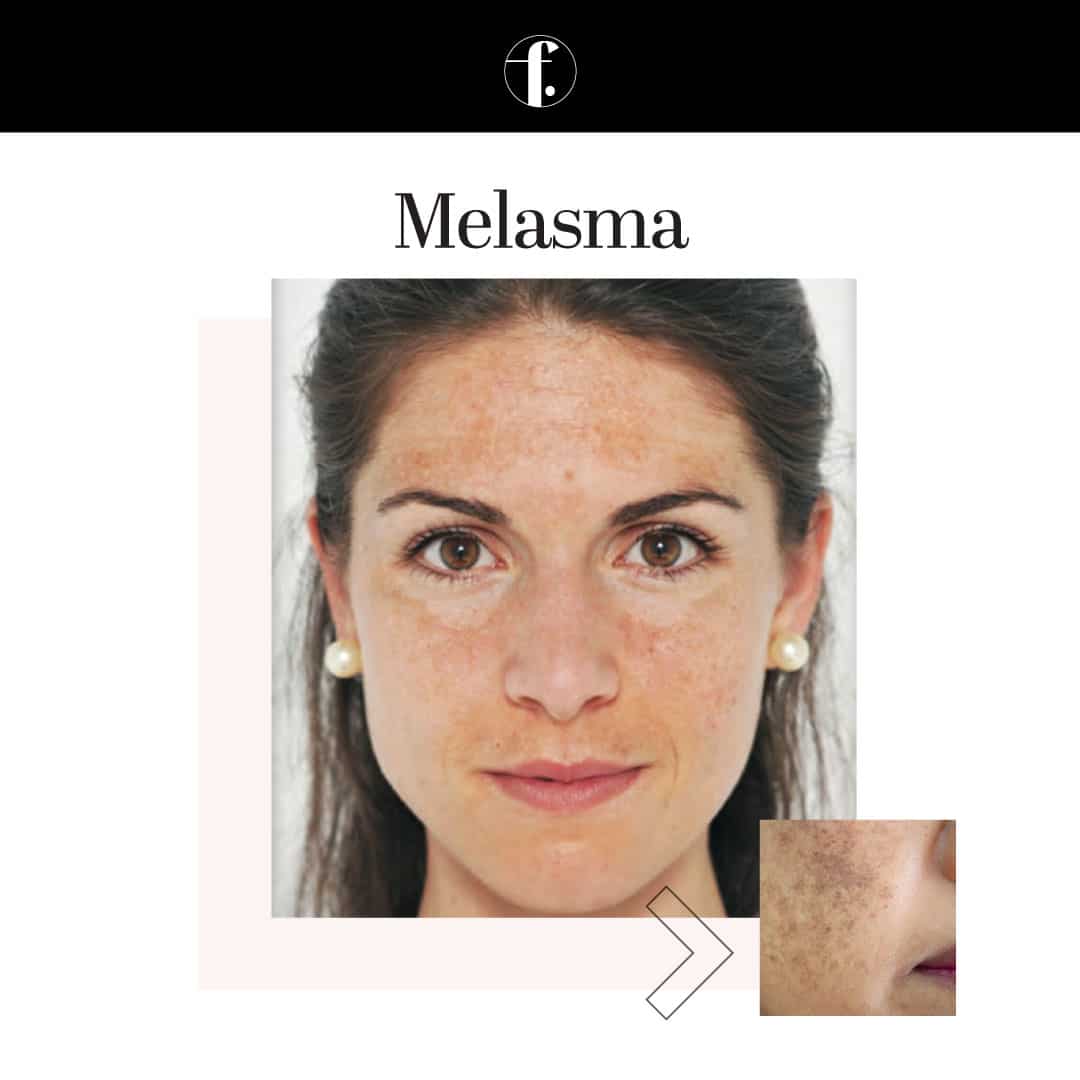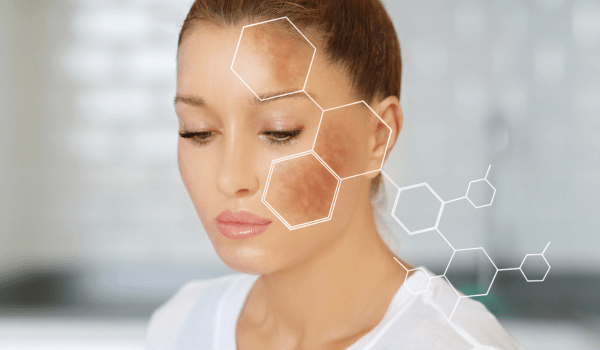Have you noticed uneven patches or dark spots on your face after a sunburn? Facial discoloration after sunburn can be frustrating, leaving you feeling self-conscious about your skin’s appearance.
You might wonder if these spots will ever fade or if they are permanent. The good news is, while sunburn can cause lasting changes, there are ways to improve your skin’s tone and bring back a more even complexion. You’ll discover why discoloration happens, how to care for your skin after sun damage, and practical steps you can take to reduce those stubborn dark spots.
Keep reading to regain your skin’s natural glow and confidence.

Credit: facialaestheticsinc.com
Causes Of Facial Discoloration
Facial discoloration after sunburn occurs due to several skin changes. The sun’s ultraviolet (UV) rays damage skin cells and trigger pigment changes. These changes result in uneven skin tone and dark patches.
The skin tries to protect itself by producing more melanin. Melanin is the pigment that gives skin its color. Too much melanin causes spots and discoloration on the face.
Sun Damage And Melanin Overproduction
UV rays damage the skin’s DNA, causing cells to create extra melanin. This melanin clumps together, forming dark spots or patches. These spots can stay even after the sunburn heals.
Inflammation And Skin Healing
Sunburn causes inflammation and skin cell injury. During healing, damaged areas may darken or lighten unevenly. This process can leave behind blotchy or patchy discoloration.
Post-inflammatory Hyperpigmentation
After skin injury, such as sunburn, pigment cells may become overactive. This leads to post-inflammatory hyperpigmentation, a common cause of dark spots on the face.
Skin Type And Genetic Factors
People with darker skin tones are more prone to discoloration after sunburn. Genetics also affect how the skin reacts to UV damage and heals afterward.
Repeated Sun Exposure
Frequent sun exposure worsens pigment irregularities. Each sunburn can increase the risk of lasting discoloration. Protecting skin from the sun is crucial to prevent this.

Credit: www.reddit.com
Types Of Sunburn Pigmentation
Sunburn can cause different types of pigmentation changes on the skin. These changes often appear as spots or patches. Understanding these types helps in managing and treating discoloration effectively. Below are the main types of sunburn pigmentation you might notice on your face.
Hyperpigmentation
This is the most common type of sunburn pigmentation. It happens when the skin produces extra melanin after sun exposure. The result is dark spots or patches on the face. These spots can vary in size and usually develop days after the sunburn.
Hypopigmentation
Unlike hyperpigmentation, hypopigmentation causes lighter patches on the skin. Sunburn can damage the skin cells that produce melanin, leading to this loss of color. These patches may appear white or pale and can be more noticeable on darker skin tones.
Post-inflammatory Pigmentation
Inflammation from sunburn can trigger pigment changes. This type appears as red, brown, or dark marks where the skin was injured. It often occurs after the skin heals but can last for weeks or months. This pigmentation is the skin’s response to injury and inflammation.
Freckles And Sunspots
Sun exposure can also cause freckles and sunspots to become darker or more visible. Freckles are small, flat brown spots that usually appear on sun-exposed areas. Sunspots, also called age spots, are larger and develop after repeated sun exposure over time.
Home Remedies For Discoloration
Facial discoloration after sunburn can be frustrating and affect your confidence. Many home remedies can help reduce the appearance of these dark spots and even out skin tone. These natural methods support skin healing gently without harsh chemicals. Consistent care and patience are key to seeing results.
Exfoliation Techniques
Exfoliation helps remove dead skin cells and promotes new skin growth. Use a gentle scrub or a soft brush to avoid irritation. Exfoliate two to three times a week for best results. Avoid harsh scrubs that can worsen discoloration. Chemical exfoliants with mild acids like glycolic acid work well too. They speed up skin renewal and fade dark spots gradually.
Vitamin C And Antioxidants
Vitamin C is a powerful antioxidant that brightens skin and boosts collagen. Apply vitamin C serums daily for visible improvement. Antioxidants neutralize free radicals caused by sun damage. This reduces further discoloration and supports skin repair. Look for products with stable vitamin C forms like ascorbic acid. Use sunscreen alongside vitamin C to protect healing skin.
Natural Brightening Agents
Several natural ingredients brighten skin and reduce discoloration. Aloe vera soothes sunburn and lightens dark patches over time. Lemon juice has natural bleaching properties but use it diluted and sparingly. Turmeric contains curcumin, which evens skin tone and reduces pigmentation. Honey moisturizes and supports skin repair too. Apply these agents gently and regularly for best results.
Medical Treatments Available
Facial discoloration after sunburn often needs more than home care. Medical treatments can reduce dark spots and even skin tone. These options target damaged skin and help restore a clearer complexion. A dermatologist can recommend the best treatment based on your skin type and discoloration severity.
Prescription Topicals
Doctors often prescribe creams with ingredients like hydroquinone or tretinoin. These topicals lighten dark spots and speed up skin cell turnover. Using prescription topicals regularly can gradually fade discoloration. It is important to follow your doctor’s instructions to avoid irritation.
Chemical Peels
Chemical peels remove the outer damaged skin layers. They use acids like glycolic or salicylic acid to exfoliate deeply. This process promotes new skin growth with a more even tone. Multiple sessions may be needed for best results. Peels also improve skin texture and brightness.
Laser And Light Therapies
Laser treatments target pigment in the skin to break it down. Intense pulsed light (IPL) therapy is a popular choice for sun damage. These therapies reduce dark spots and encourage collagen production. Usually, several sessions are required to see clear improvement. Laser treatments must be done by trained professionals for safety.
Prevention Strategies
Preventing facial discoloration after sunburn is crucial for maintaining healthy skin. Sun damage can cause uneven skin tone and stubborn dark spots. Taking proactive steps reduces the risk of discoloration and keeps your complexion clear. Simple prevention strategies protect your skin from harmful UV rays and support skin healing.
Sun Protection Measures
Use sunscreen every day, even on cloudy days. Choose broad-spectrum sunscreen with at least SPF 30. Apply it generously on all exposed areas of your face. Reapply every two hours, especially after sweating or swimming. Wear wide-brimmed hats and sunglasses to shield your face. Seek shade during peak sun hours, usually between 10 a.m. and 4 p.m. Avoid tanning beds and prolonged sun exposure to prevent skin damage.
Daily Skincare Habits
Cleanse your face gently twice daily to remove dirt and sweat. Use mild, fragrance-free cleansers to avoid irritation. Apply moisturizers to keep skin hydrated and support its barrier. Incorporate antioxidants like vitamin C serum to protect and brighten skin. Avoid harsh scrubs or exfoliants that can worsen discoloration. Always remove makeup before bed to allow skin to repair overnight.
When To See A Dermatologist
Facial discoloration after sunburn can be concerning. Most discoloration fades with time and care. Some cases need professional help. Knowing when to see a dermatologist is important. Early treatment can prevent lasting skin damage.
Skin changes after sunburn vary. Some spots may darken or become uneven. A dermatologist can diagnose and treat these changes. They provide safe and effective options. Here are signs that show a visit is needed.
Persistent Or Worsening Discoloration
Discoloration that lasts more than a few weeks needs attention. If dark spots grow or spread, see a dermatologist. Early treatment helps stop further skin changes. Do not wait for discoloration to clear on its own.
Pain, Itching, Or Swelling
Discoloration with pain or itching may signal infection or severe damage. Swelling or blistering also requires professional care. These symptoms can worsen without treatment. A dermatologist can provide relief and healing options.
Uneven Skin Texture Or New Growths
Sunburn can cause rough patches or new bumps on the skin. These changes may need a skin exam. Some growths could be precancerous or harmful. Early detection improves treatment success.
History Of Skin Cancer Or High Sun Exposure
People with past skin cancer or heavy sun exposure need regular check-ups. Discoloration in these cases may indicate serious problems. Dermatologists offer specialized care and monitoring. Protect your skin by staying vigilant.
No Improvement After Home Care
Use gentle cleansers and moisturizers after sunburn. If discoloration stays the same or gets worse, seek help. Over-the-counter products may not be enough. A dermatologist can suggest stronger treatments.

Credit: www.vucare.com
Frequently Asked Questions
Does Skin Discoloration From Sunburn Go Away?
Skin discoloration from sunburn may fade over time but often persists without treatment. Use treatments like exfoliation, vitamin C, or prescription topicals to reduce discoloration effectively. Protect skin from UV rays to prevent further damage and pigmentation changes.
How To Get Rid Of Sun Discoloration On Face?
Use exfoliation and vitamin C serums to brighten skin and reduce sun discoloration. Consult a dermatologist for prescription treatments or chemical peels. Always apply sunscreen to prevent further damage.
Can Skin Darkening Due To Sun Be Reversed?
Sun-induced skin darkening cannot be fully reversed, but treatments like exfoliation, vitamin C, and chemical peels can improve its appearance.
How Do You Get Rid Of Hyperpigmentation From Sunburn?
Use vitamin C, retinol, or azelaic acid creams to reduce hyperpigmentation. Regular exfoliation and sunscreen protect and brighten skin. Consult a dermatologist for stronger treatments like chemical peels or laser therapy.
Conclusion
Facial discoloration after sunburn can be frustrating to see. Treating it early helps improve your skin’s look. Use gentle skincare with ingredients like vitamin C and retinol. Protect your face from further sun damage by wearing sunscreen daily. Remember, patience is key; skin healing takes time.
Consult a dermatologist for persistent or severe discoloration. Taking care of your skin now prevents lasting marks later. Healthy habits and sun protection keep your skin glowing and even-toned.
 Skip to content
Skip to content 